|
[1]
|
Valencia S C, Simon D, Croese S, et al. (2019) Adapting the Sustainable Development Goals and the New Urban Agenda to the city level: Initial reflections from a comparative research project. Int J Urban Sustain 11: 4–23. https://doi.org/10.1080/19463138.2019.1573172 doi: 10.1080/19463138.2019.1573172

|
|
[2]
|
Hu A H, Huang L H, Chang Y L. (2016, September) Assessing corporate sustainability of the ICT sector in Taiwan on the basis of UN Sustainable Development Goals. In 2016 Electronics goes green 2016+(EGG) (pp. 1–6) IEEE. https://doi.org/10.1109/EGG.2016.7829866
|
|
[3]
|
Verboven H, Vanherck L. (2016) The sustainability paradox of the sharing economy. uwf UmweltWirtschaftsForum, 24: 303–314. https://doi.org/10.1007/s00550-016-0410-y
|
|
[4]
|
ElMassah S, Mohieldin M (2020) Digital transformation and localizing the sustainable development goals (SDGs). Ecol Econ 169: 106490. https://doi.org/10.1016/j.ecolecon.2019.106490 doi: 10.1016/j.ecolecon.2019.106490

|
|
[5]
|
UN Development Group. 2014. Localizing the Post-2015 Agenda: Dialogues on Implementation. New York. p. 6–7
|
|
[6]
|
Oosterhof PD (2018) Localizing the Sustainable Development Goals to Accelerate Implementation of the 2030 Agenda for Sustainable Development. Gov Brief 33. http://dx.doi.org/10.22617/BRF189612
|
|
[7]
|
Kanuri C, Revi A, Espey J, et al. (2016) Getting Started with the SDGs in Cities: A Guide for Stakeholders. Sustainable Development Solutions Network, NY, USA.
|
|
[8]
|
Bardal KG, Reinar MB, Lundberg AK, et al. (2021) Factors Facilitating the Implementation of the Sustainable Development Goals in Regional and Local Planning—Experiences from Norway. Sustainability 13: 4282. https://doi.org/10.3390/su13084282 doi: 10.3390/su13084282

|
|
[9]
|
Croese S, Oloko M, Simon D, et al. (2021) Bringing the global to the local: The challenges of multi-level governance for global policy implementation in Africa. Int J Urban Sustain Dev13: 435–447. https://doi.org/10.1080/19463138.2021.1958335 doi: 10.1080/19463138.2021.1958335

|
|
[10]
|
Sisto R, García López J, Quintanilla A, et al. (2020) Quantitative analysis of the impact of public policies on the sustainable development goals through budget allocation and indicators. Sustainability 12: 10583. https://doi.org/10.3390/su122410583 doi: 10.3390/su122410583

|
|
[11]
|
Tavares A F, da Cruz NF (2020) Explaining the transparency of local government websites through a political market framework. Gov Inform Q 37: 101249. http://dx.doi.org/10.1016/j.giq.2017.08.005 doi: 10.1016/j.giq.2017.08.005

|
|
[12]
|
Fenton P, Gustafsson S (2017) Moving from high-level words to local action: governance for urban sustainability in municipalities. Curr Opin Environ Sust 26–27: 129–133. https://doi.org/10.1016/j.cosust.2017.07.009 doi: 10.1016/j.cosust.2017.07.009

|
|
[13]
|
Gustafsson S, Ivner J (2018) Implementing the Global Sustainable Goals (SDGs) into Municipal Strategies Applying an Integrated Approach. In: Leal Filho, W. (eds) Handbook of Sustainability Science and Research. World Sustainability Series. Springer, Cham. https://doi.org/10.1007/978-3-319-63007-6_18
|
|
[14]
|
Schudson M (2020) The shortcomings of transparency for democracy. Am Behav Sci 64: 1670–1678. https://doi.org/10.1177/000276422094534 doi: 10.1177/000276422094534

|
|
[15]
|
Akande A, Cabral P, Gomes P, et al. (2019) The Lisbon ranking for smart sustainable cities in Europe. Sustain Cities Soc 44: 475–487. https://doi.org/10.1016/j.scs.2018.10.009 doi: 10.1016/j.scs.2018.10.009

|
|
[16]
|
D'Adamo I, Gastaldi M, Ioppolo G, et al. (2022a) An analysis of Sustainable Development Goals in Italian cities: Performance measurements and policy implications. Land Use Policy 120: 106278. https://doi.org/10.1016/j.landusepol.2022.106278 doi: 10.1016/j.landusepol.2022.106278

|
|
[17]
|
D'Adamo I, Gastaldi M (2022) Sustainable Development Goals: A Regional Overview Based on Multi-Criteria Decision Analysis. Sustainability 14: 9779. https://doi.org/10.3390/su14159779 doi: 10.3390/su14159779

|
|
[18]
|
D'Adamo I, Gastaldi M, Morone P (2022b) Economic sustainable development goals: Assessments and perspectives in Europe. J Clean Prod 354: 131730. https://doi.org/10.1016/j.jclepro.2022.131730 doi: 10.1016/j.jclepro.2022.131730

|
|
[19]
|
Martínez-Córdoba PJ, Amor-Esteban V, Benito B, et al. (2021a) The commitment of Spanish local governments to Sustainable Development Goal 11 from a multivariate perspective. Sustainability 13: 1222. https://doi.org/10.3390/su13031222 doi: 10.3390/su13031222

|
|
[20]
|
United Nations General Assembly (2015) Transforming our world: The 2030 agenda for sustainable development. New York. Available at: http://www.un.org/ga/search/view_doc.asp?symbol = A/RES/70/1 & Lang = E
|
|
[21]
|
Martínez-Córdoba PJ, Raimo N, Vitolla F, et al. (2020) Achieving sustainable development goals. Efficiency in the Spanish clean water and sanitation sector. Sustainability 12: 3015. https://doi.org/10.3390/su12073015 doi: 10.3390/su12073015

|
|
[22]
|
Alcaraz-Quiles FJ, Navarro-Galera A, Ortiz-Rodríguez D (2017) La transparencia sobre sostenibilidad en gobiernos regionales: el caso de España. Convergencia 24: 113–140.
|
|
[23]
|
Navarro-Galera A, Alcaraz-Quiles FJ, Ortiz-Rodriguez D (2018) Enhancing sustainability transparency in local governments—An empirical research in Europe. Sustainability 10: 2161. https://doi.org/10.3390/su10072161 doi: 10.3390/su10072161

|
|
[24]
|
García-Sánchez IM, Frías-Aceituno JV, Rodríguez-Domínguez L (2013) Determinants of corporate social disclosure in Spanish local governments. J Clean Prod 39: 60–72. https://doi.org/10.1016/j.jclepro.2012.08.037 doi: 10.1016/j.jclepro.2012.08.037

|
|
[25]
|
Ribeiro VP, Aibar-Guzmán C, Aibar-Guzman B, et al. (2016) Determinants of environmental accounting and reporting practices in Portuguese local entities. Corp Commun 21: 352–370. https://doi.org/10.1108/CCIJ-11-2015-0071 doi: 10.1108/CCIJ-11-2015-0071

|
|
[26]
|
Lopez Subires MD, Alcaide Munoz L, Navarro Galera A, et al. (2019) The influence of socio-demographic factors on financial sustainability of public services: A comparative analysis in regional governments and local governments. Sustainability 11: 6008. https://doi.org/10.3390/su11216008 doi: 10.3390/su11216008

|
|
[27]
|
Freeman RE (1984) Strategic management: A stakeholder approach. Boston: Pitman Publishing Inc.
|
|
[28]
|
Rose J, Flak LS, Sæbø Ø (2018) Stakeholder theory for the E-government context: Framing a value-oriented normative core. Gov Inform Q 35: 362–374. https://doi.org/10.1016/j.giq.2018.06.005 doi: 10.1016/j.giq.2018.06.005

|
|
[29]
|
DiMaggio PJ, Powell WW (1983) The iron cage revisited: Institutional isomorphism and collective rationality in organizational fields. Am Sociol Rev 48: 147–160. https://doi.org/10.2307/2095101 doi: 10.2307/2095101

|
|
[30]
|
Navarro A, Alcaraz FJ, Ortiz D (2010) La Divulgación de Información Sobre Responsabilidad Corporativa en Administraciones Públicas: Un Estudio Empírico en Gobiernos Locales: The Disclosure of Corporate Social Responsibility Information in Public Administratons: An Empirical Study in Local Governments. Revista de Contabilidad-Spanish Accounting Review 13: 285–314. https://doi.org/10.1016/S1138-4891(10)70019-4 doi: 10.1016/S1138-4891(10)70019-4

|
|
[31]
|
Guillamón MD, Bastida F, Benito B (2011) The determinants of local government's financial transparency. Local Gov Stud 37: 391–406. https://doi.org/10.1080/03003930.2011.588704 doi: 10.1080/03003930.2011.588704

|
|
[32]
|
Prado-Lorenzo JM, García-Sánchez IM, Cuadrado-Ballesteros B (2012) Sustainable cities: do political factors determine the quality of life? J Clean Prod 21: 34–44. https://doi.org/10.1016/j.jclepro.2011.08.021 doi: 10.1016/j.jclepro.2011.08.021

|
|
[33]
|
Bengtsson M (2016) How to plan and perform a qualitative study using content analysis. Nursing Plus open 2: 8–14. https://doi.org/10.1016/j.npls.2016.01.001 doi: 10.1016/j.npls.2016.01.001

|
|
[34]
|
Bonsón E, Flores F (2011) Social media and corporate dialogue: the response of global financial institutions. Online information review. http://dx.doi.org/10.1108/14684521111113579
|
|
[35]
|
Bonsón E, Torres L, Royo S, et al. (2012) Local e-government 2.0: Social media and corporate transparency in municipalities. Gov Inform Q 29: 123–132. https://doi.org/10.1016/j.giq.2011.10.001 doi: 10.1016/j.giq.2011.10.001

|
|
[36]
|
Alcaraz-Quiles FJ, Galera AN, Ortiz‐Rodríguez D (2015) Les facteurs déterminant la publication en ligne par les gouvernements locaux des rapports sur la durabilité. Revue Internationale des Sciences Administratives 81: 85–115.
|
|
[37]
|
Navarro-Galera A, Ruiz-Lozano M, Tirado-Valencia P, et al. (2017) Promoting sustainability transparency in European local governments: An empirical analysis based on administrative cultures. Sustainability 9: 432. https://doi.org/10.3390/su9030432 doi: 10.3390/su9030432

|
|
[38]
|
Ortiz-Rodríguez D, Navarro-Galera A, Alcaraz-Quiles FJ (2018) The influence of administrative culture on sustainability transparency in European local governments. Admin Soc 50: 555–594. https://doi.org/10.1177/0095399715616838 doi: 10.1177/0095399715616838

|
|
[39]
|
Amor-Esteban V, García-Sánchez IM, Galindo-Villardón MP (2018a) Analysing the effect of legal system on corporate social responsibility (CSR) at the country level, from a multivariate perspective. Soc Indic Res 140: 435–452. https://doi.org/10.1007/s11205-017-1782-2 doi: 10.1007/s11205-017-1782-2

|
|
[40]
|
García‐Sánchez IM, Amor‐Esteban V, Aibar‐Guzmán C, et al. (2022) Translating the 2030 Agenda into reality through stakeholder engagement. Sustain Dev https://doi.org/10.1002/sd.2431
|
|
[41]
|
Amor-Esteban V, Galindo-Villardón MP, David F (2018b) Study of the importance of national identity in the development of corporate social responsibility practices: A multivariate vision. Adm Sci 8: 50. https://doi.org/10.3390/admsci8030050 doi: 10.3390/admsci8030050

|
|
[42]
|
Amor-Esteban V, Galindo-Villardón MP, García-Sánchez IM (2018c) Industry mimetic isomorphism and sustainable development based on the X-STATIS and HJ-biplot methods. Environ Sci Pollut Res 25: 26192–26208. https://doi.org/10.1007/s11356-018-2663-1 doi: 10.1007/s11356-018-2663-1

|
|
[43]
|
Gallego-Alvarez I, Galindo-Villardón MP, Rodriguez-Rosa M (2015) Evolution of sustainability indicator worldwide: A study from the economic perspective based on the X-STATICO method. Ecol Indic 58: 139–151. https://doi.org/10.1016/j.ecolind.2015.05.025 doi: 10.1016/j.ecolind.2015.05.025

|
|
[44]
|
Medina-Hernández EJ, Fernández-Gómez MJ, Barrera-Mellado I (2021) Analysis of time use surveys using co-statis: a multiway data analysis of gender inequalities in time use in Colombia. Sustainability 13: 13073. https://doi.org/10.3390/su132313073 doi: 10.3390/su132313073

|
|
[45]
|
Prieto JM, Amor V, Turias I, et al. (2021) Evaluation of Paris MoU Maritime Inspections Using a STATIS Approach. Mathematics 9: 2092. https://doi.org/10.3390/math9172092 doi: 10.3390/math9172092

|
|
[46]
|
Gallego-Álvarez I, Rodríguez-Rosa M, Vicente-Galindo P (2021) Are worldwide governance indicators stable or do they change over time? A comparative study using multivariate analysis. Mathematics 9: 3257. https://doi.org/10.3390/math9243257 doi: 10.3390/math9243257

|
|
[47]
|
Escoufier Y (1976) Opérateur associé à un Tableau de Données. In Annales de l'INSEE; Institut national de la statistique et des études économiques (pp. 165.179).
|
|
[48]
|
L'Hermier des Plantes H (1976) Structuration des Tableauya trois Indices de la Statistique; Université Montpellier II, Montpellier, France.
|
|
[49]
|
Thioulouse J, Chessel D, Dole S, et al. (1997) ADE-4: A multivariate analysis and graphical display software. Stat Comput 7: 75–83. https://doi.org/10.1023/A:1018513530268 doi: 10.1023/A:1018513530268

|
|
[50]
|
Alcaraz-Quiles FJ, Navarro-Galera A, Ortiz-Rodríguez D (2014) Factors influencing the transparency of sustainability information in regional governments: An empirical study. J Clean Prod 82: 179–191. https://doi.org/10.1016/j.jclepro.2014.06.086 doi: 10.1016/j.jclepro.2014.06.086

|
|
[51]
|
Navarro-Galera A, Ortiz-Rodríguez D, Alcaraz-Quiles FJ (2019) Un impulso a la transparencia sobre sostenibilidad en gobiernos locales europeos mediante factores poblacionales, socioeconómicos, financieros y legales. Spanish Journal of Finance and Accounting/Revista Española de Financiación y Contabilidad 48: 525–554. https://doi.org/10.1080/02102412.2019.1629204 doi: 10.1080/02102412.2019.1629204

|
|
[52]
|
Martínez-Córdoba PJ, Benito B, García-Sánchez IM. (2021b) Efficiency in the governance of the Covid-19 pandemic: political and territorial factors. Globalization health 17: 113. https://doi.org/10.1186/s12992-021-00759-4 doi: 10.1186/s12992-021-00759-4

|
|
[53]
|
Cheng Y, Liu H, Wang S, et al. (2021). Global action on SDGs: policy review and outlook in a post-pandemic Era. Sustainability 13: 6461. https://doi.org/10.3390/su13116461 doi: 10.3390/su13116461

|
|
[54]
|
Hartanto D, Siregar SM (2021) Determinants of overall public trust in local government: Meditation of government response to COVID-19 in Indonesian context. Transform Gov-People 15: 261–274. https://doi.org/10.1108/TG-08-2020-0193 doi: 10.1108/TG-08-2020-0193

|
|
[55]
|
Padeiro M, Bueno-Larraz B, Freitas  (2021) Local governments' use of social media during the COVID-19 pandemic: The case of Portugal. Gov Inform Q 38: 101620. https://doi.org/10.1016/j.giq.2021.101620 doi: 10.1016/j.giq.2021.101620

|
|
[56]
|
Fondazione Eni Enrico Mattei (2020) SDSN Italy SDGs City Index. Available at: https://www.feem.it/m/publications_pages/rpt-2020-city-index.pdf.Accessed March 25, 2023
|
|
[57]
|
Masuda H, Kawakubo S, Okitasari M, et al. (2022) Exploring the role of local governments as intermediaries to facilitate partnerships for the Sustainable Development Goals. Sustain Cities Soc 82: 103883. https://doi.org/10.1016/j.scs.2022.103883 doi: 10.1016/j.scs.2022.103883

|
|
[58]
|
Armstrong A, Li Y (2022) Governance and sustainability in local government. Australas Account Bu 16: 12–31. http://dx.doi.org/10.14453/aabfj.v16i2.3
|
|
[59]
|
Conard B (2013) Some Challenges to Sustainability. Sustainability 2013: 3368–3381. https://doi.org/10.3390/su5083368 doi: 10.3390/su5083368

|











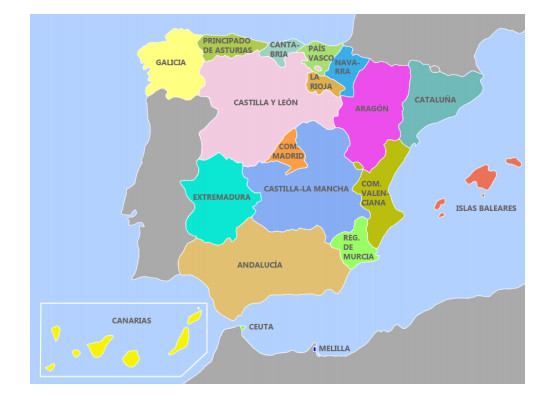
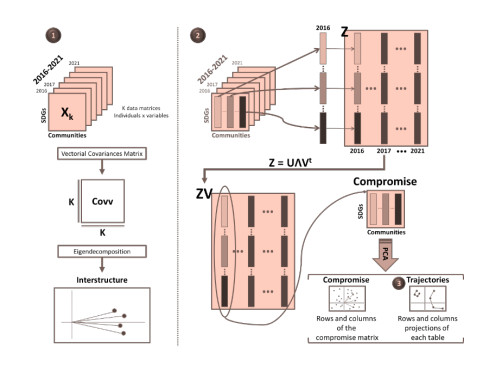
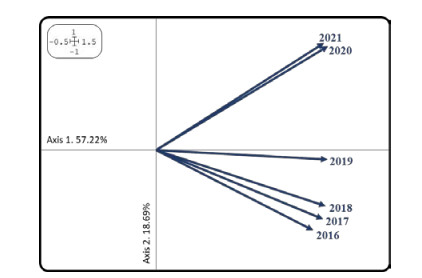

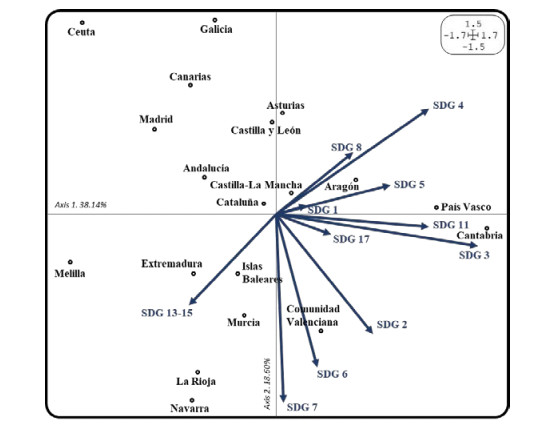

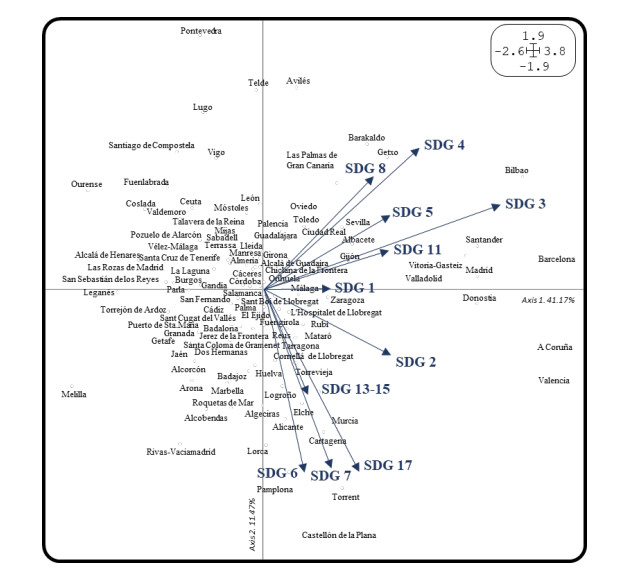


 DownLoad:
DownLoad: